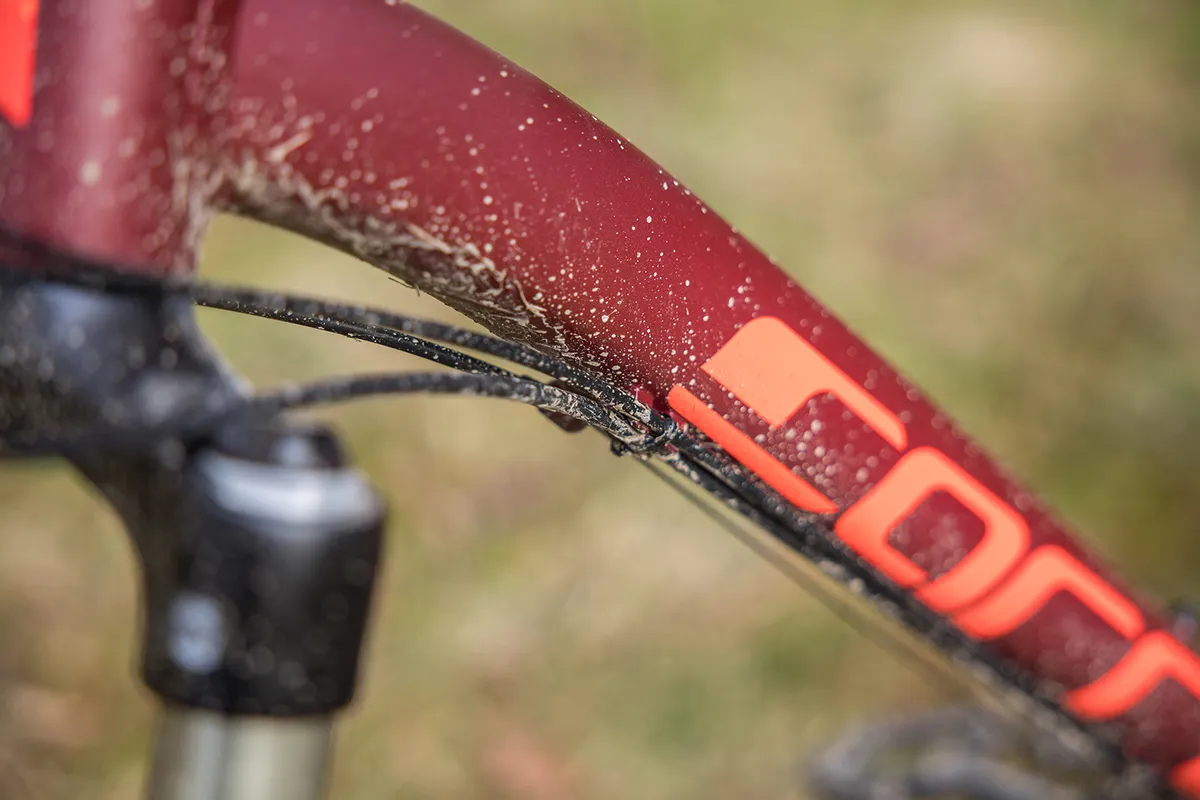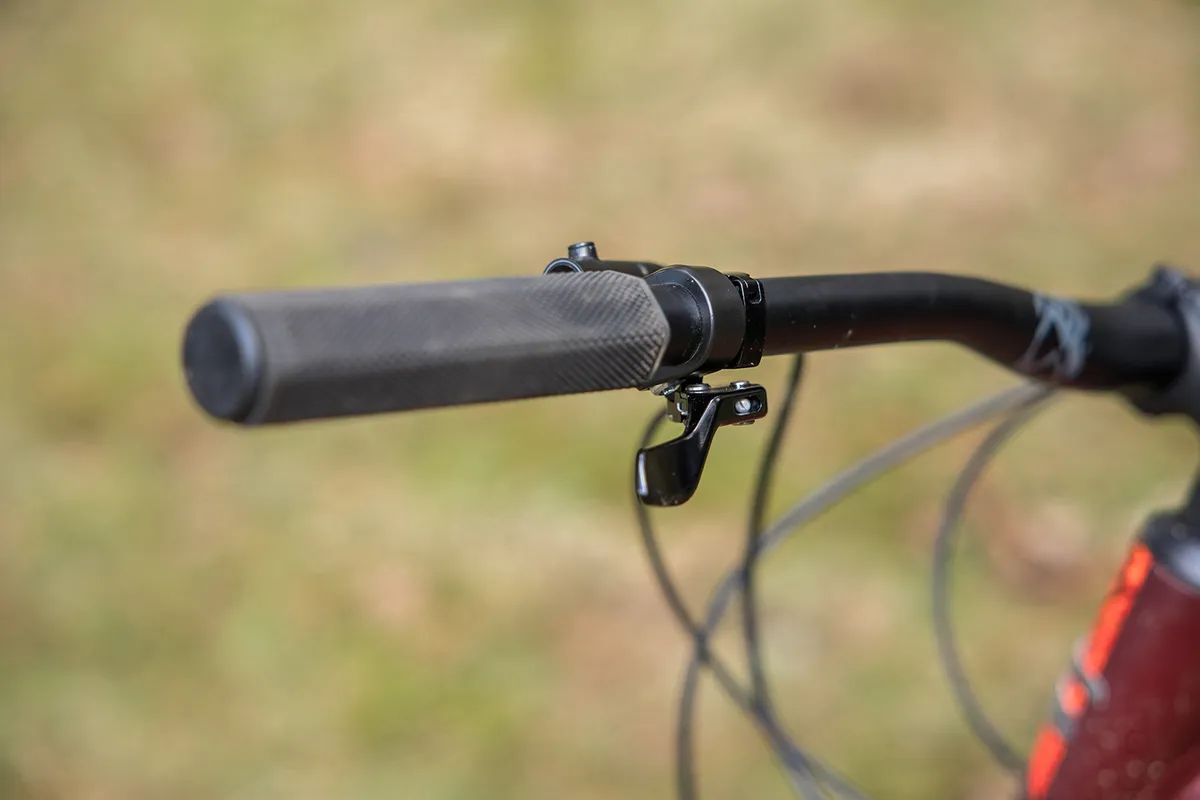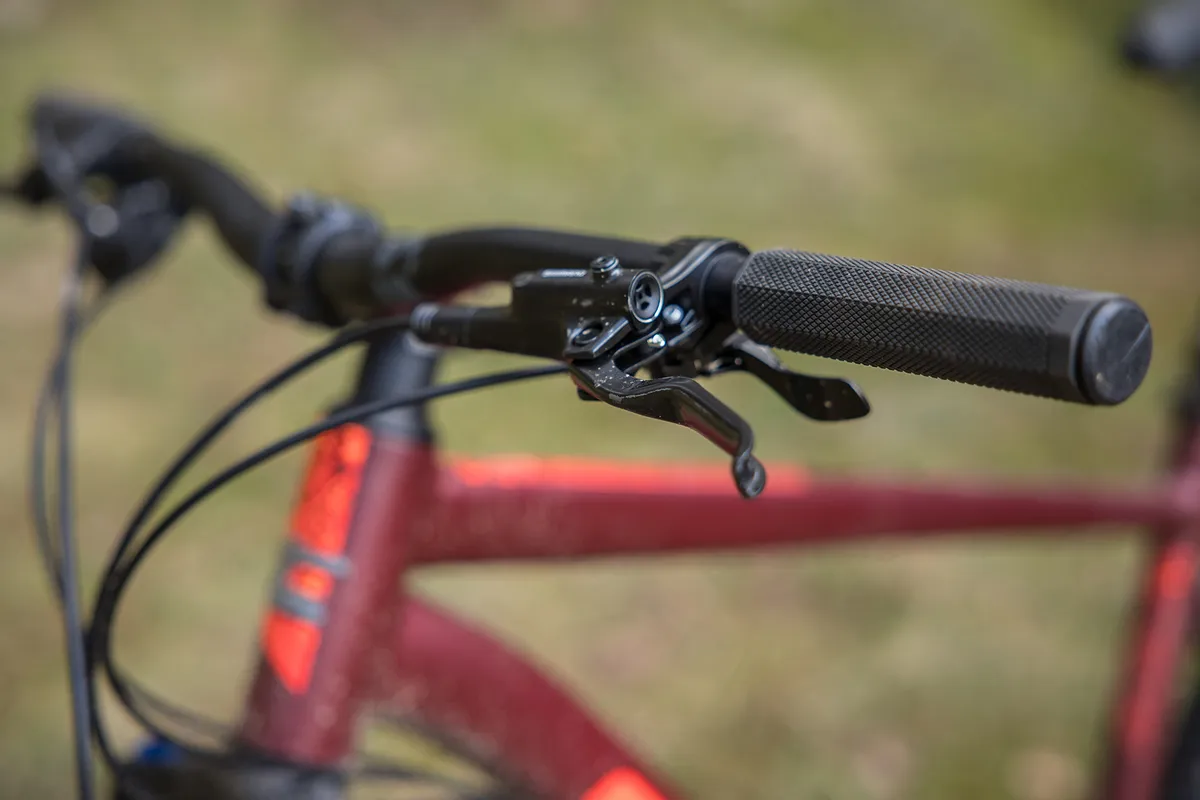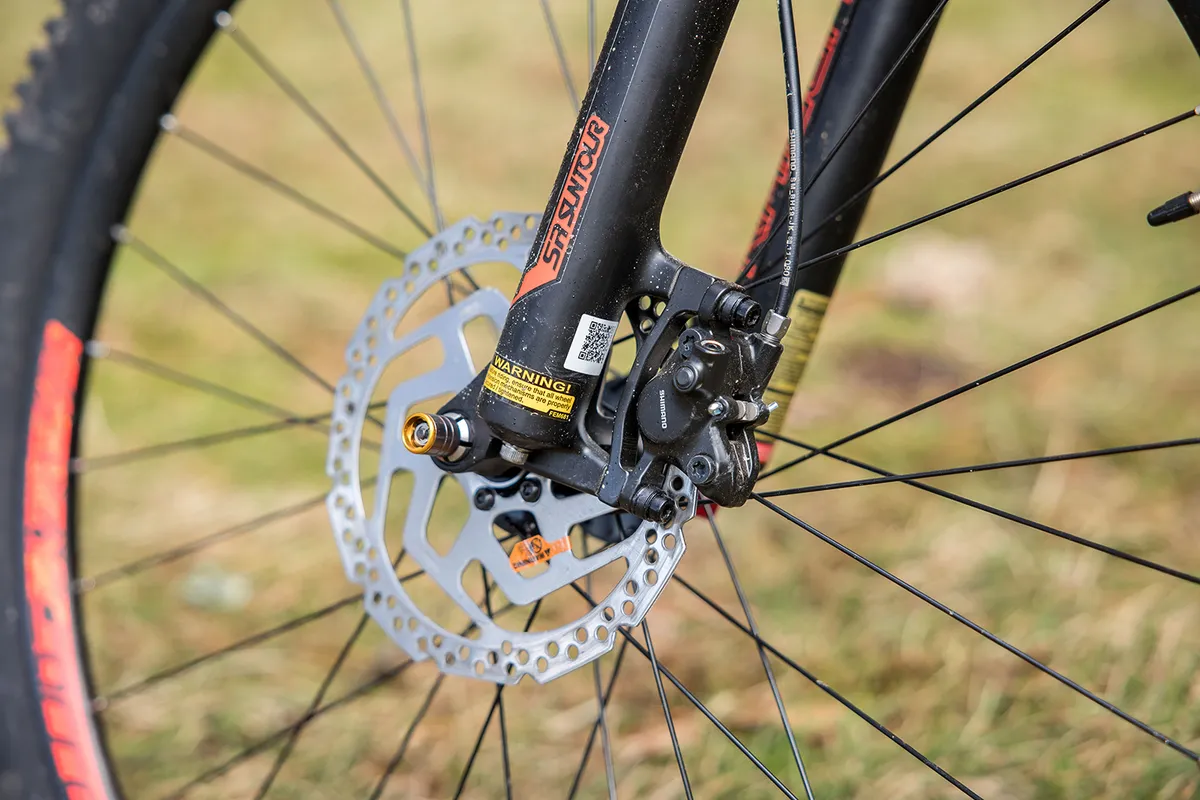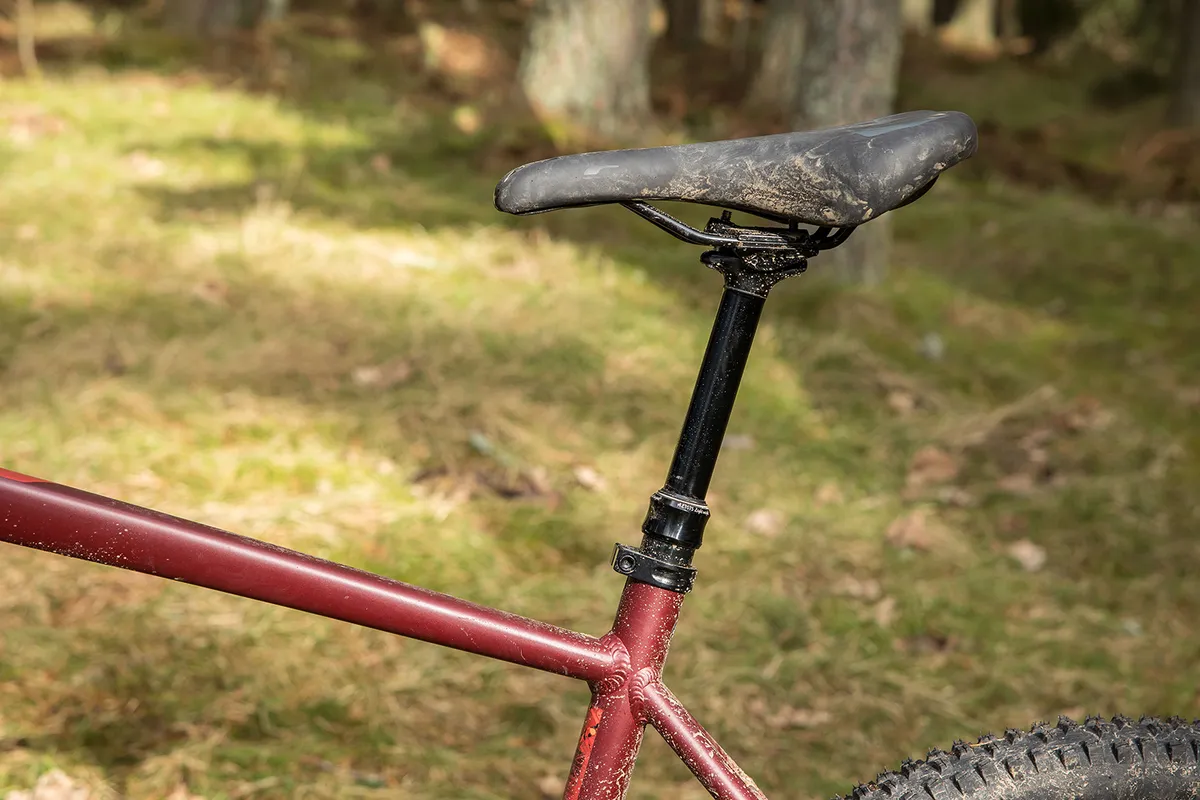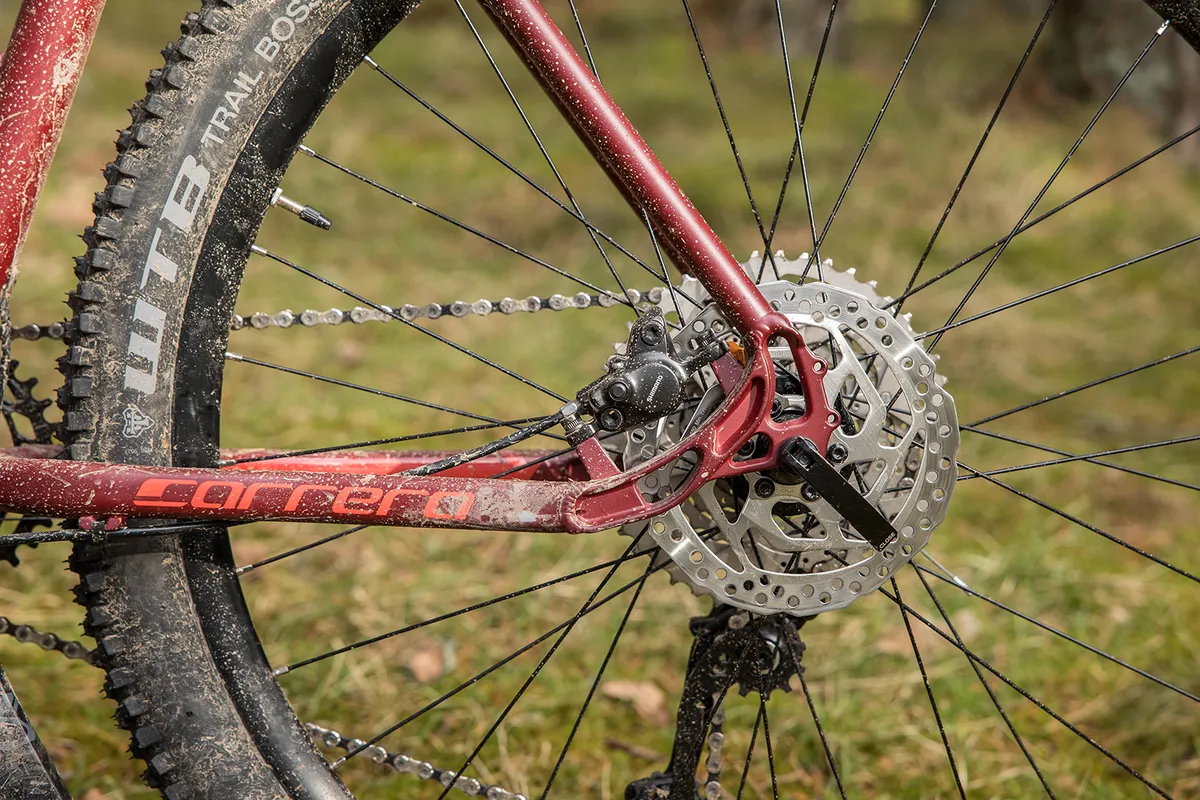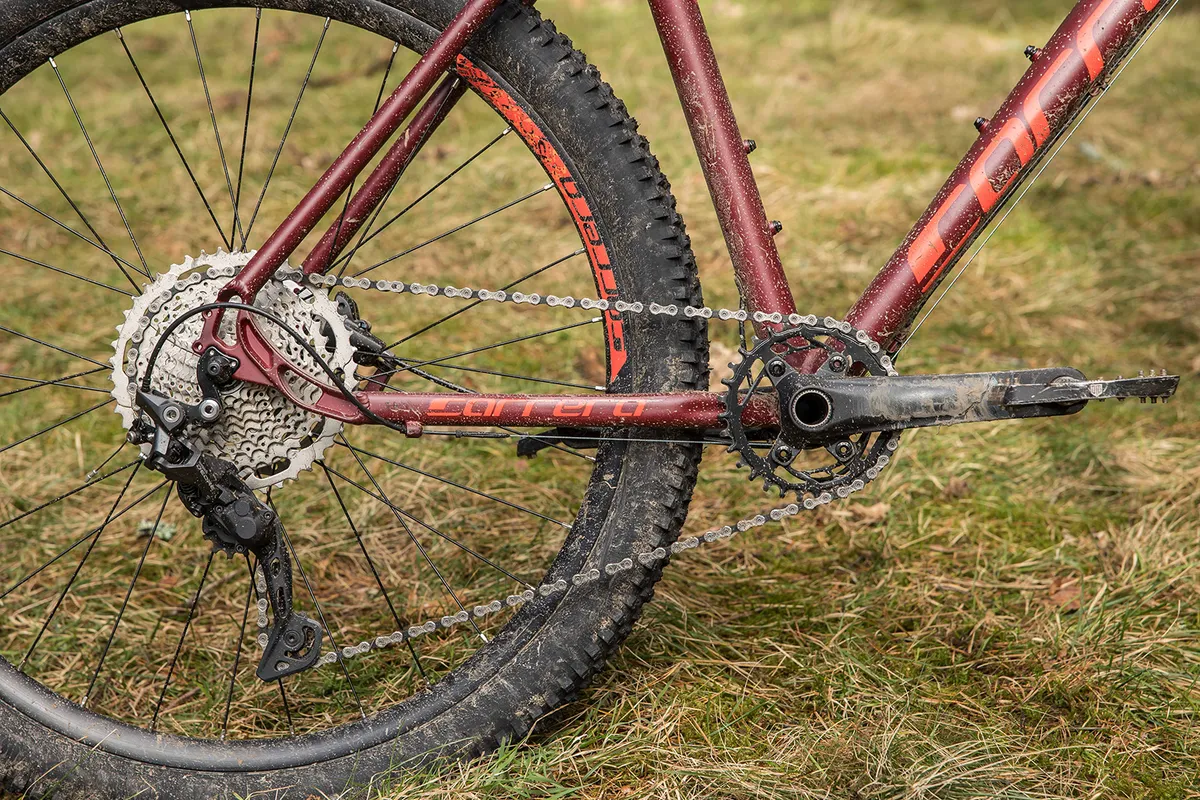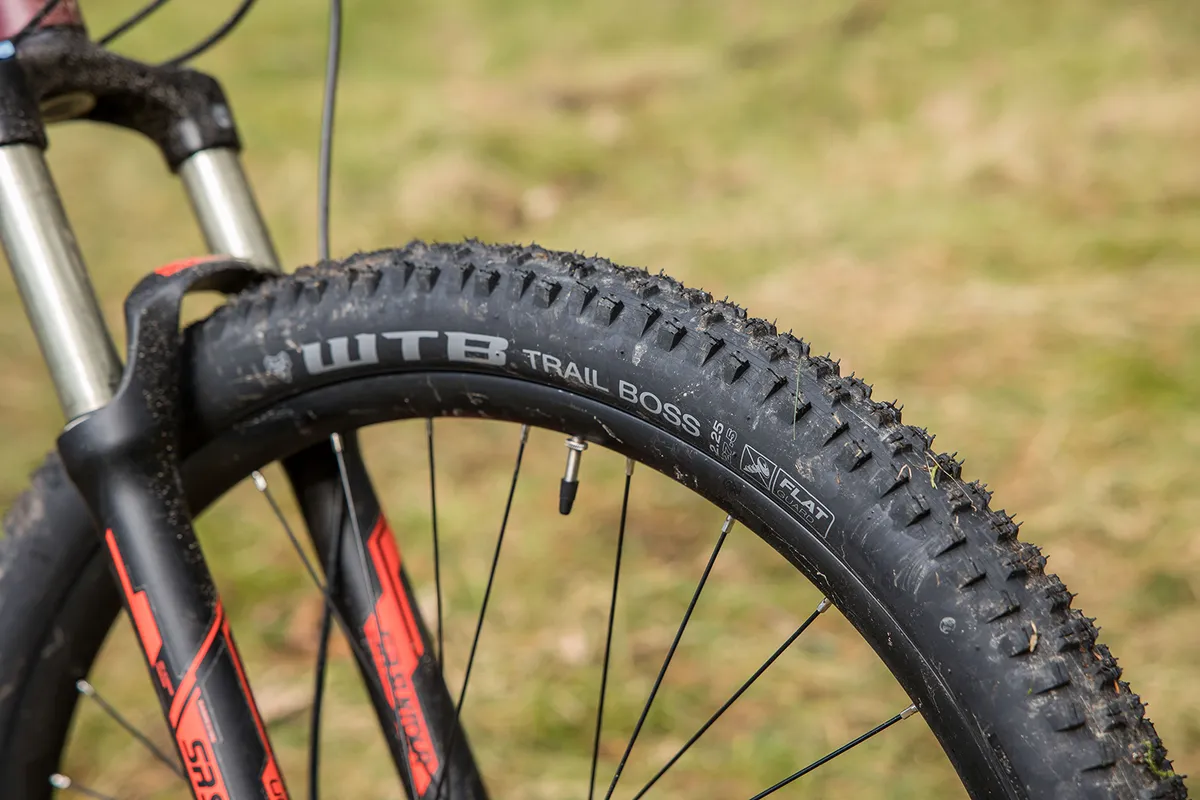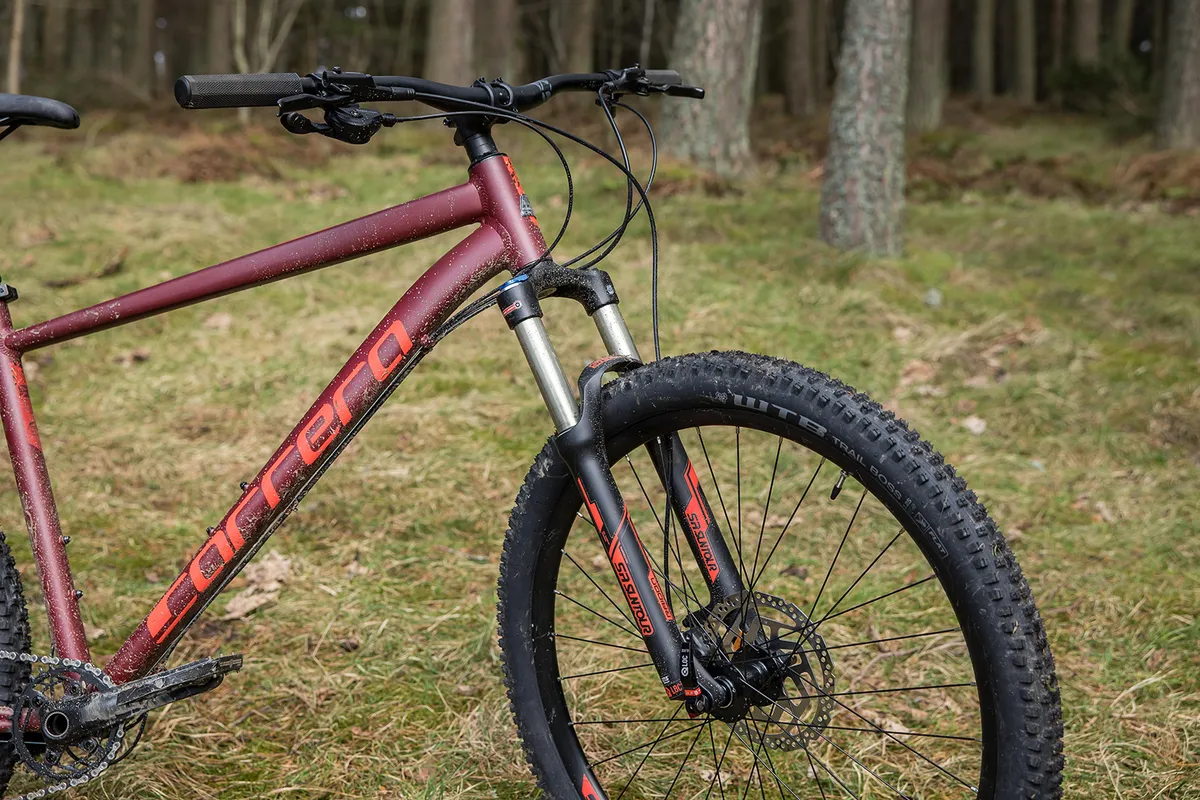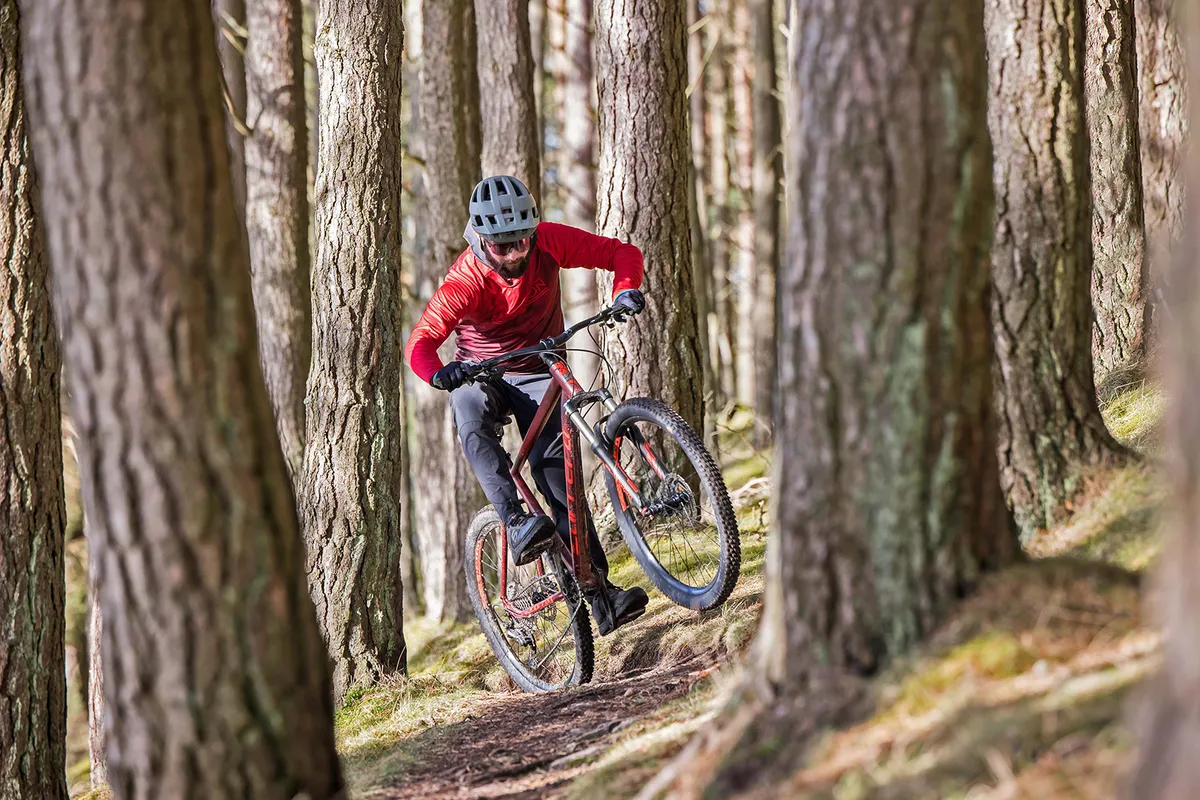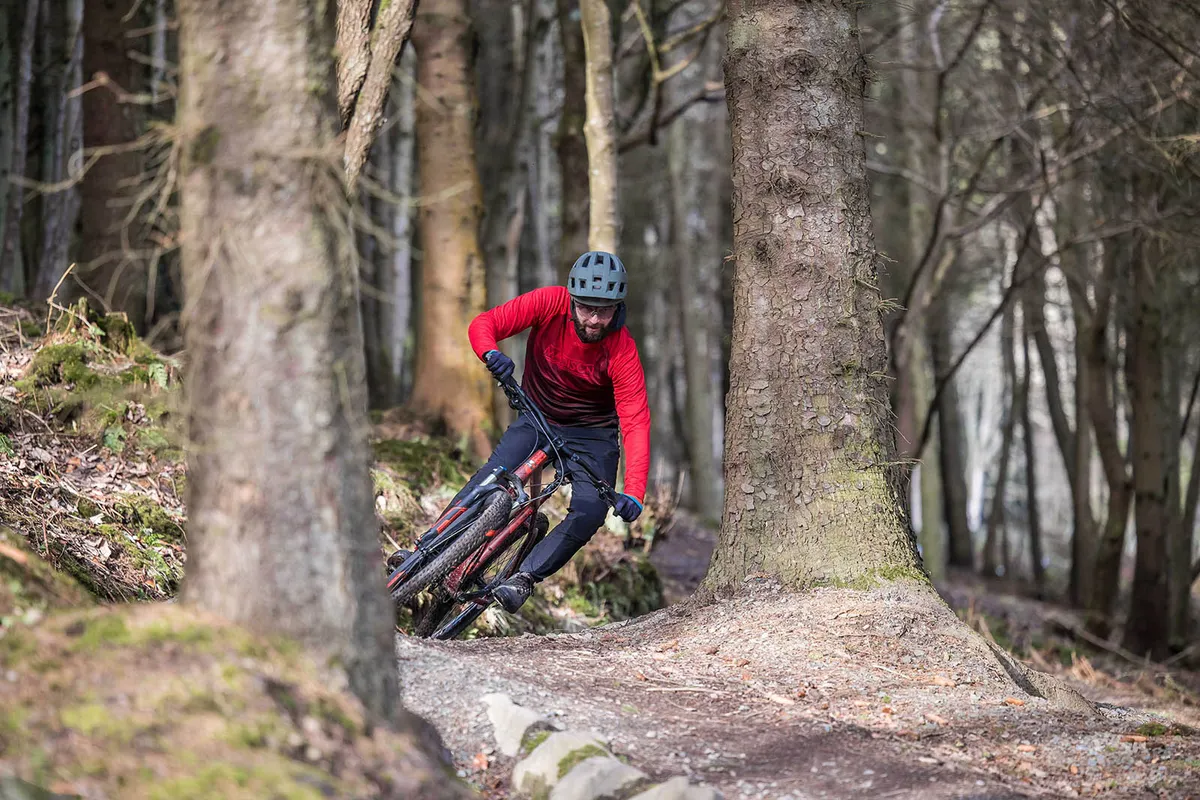UK motor/cycling juggernaut Halfords has been making great-value mountain bikes bearing the Carrera name for years, so you can trust it knows exactly what customers are after and this 650b-wheeled Fury appears to tick multiple must-have boxes, with its virtually uncompromised spec at a really remarkable price.
It features a dropper post, a 1x10 Shimano drivetrain and hydraulic disc brakes, plus a 120mm-travel SR Suntour suspension fork with a lockout and rebound damping adjustment.
Geometry-wise, it’s relatively long and slack for this price bracket, with a 67-degree head angle and 459mm reach (large size). On paper, it looks hard to beat.
Carrera Fury frame and geometry
Rolling on 650b wheels, the aluminium frame is backed by a lifetime guarantee, but its more industrial looks may not appeal to everyone.
The rear brake hose and gear cable are routed externally, along the underside of the down tube, and there are two sets of bottle mounts.
Out back, 10×141mm ‘Boost QR’ spacing improves stiffness over a regular 9×135mm QR axle, but not to the same extent as a 12×148mm Boost thru-axle.
The head angle is a fairly slack 67 degrees. Because the standover height is quite high and the seat tube long, they make getting on and off the bike feel a little ungainly.
| | XS | S | M | L | XL |
|---|---|---|---|---|---|
| Seat angle (degrees) | 74 | 73 | 73 | 73 | 73 |
| Head angle (degrees) | 67 | 67 | 67 | 67 | 67 |
| Chainstay (cm) | 42.7 | 42.7 | 42.7 | 42.7 | 42.7 |
| Seat tube (cm) | 35.5 | 41 | 46 | 51 | 56 |
| Top tube (cm) | 57 | 58.6 | 61.5 | 63.5 | 65.5 |
| Head tube (cm) | 10 | 10 | 11 | 13 | 15 |
| Fork offset (cm) | 4 | 4 | 4 | 4 | 4 |
| Bottom bracket drop (cm) | 4.5 | 4.5 | 4.5 | 4.5 | 4.5 |
Carrera Fury kit
The Fury is kitted out with components that represent great value for money. Most notably, it comes with a dropper post. This is an own-brand unit with a limited 125mm of travel, but being able to drop the saddle with the press of a bar-mounted lever is great for control on undulating trails and descents.
The Fury has a 10-speed Shimano Deore-based drivetrain (the cranks are from Prowheel), with a 32t chainring for a harder top gear than the 30t rings found on similar bikes in this category. Stopping is taken care of by Shimano's MT200 units, with 180/160mm rotors.
The WTB Trail Boss tyres come fitted with Carrera’s own Puncture Protect system – a foam insert to help prevent pinch flats. You also get a Carrera bar, stem, saddle and rims.
Carrera Fury ride impressions
Even though the Carrera’s spec suggested it should have killer performance, its descending and climbing competence still caught me a little off-guard.
Going uphill, the geometry puts you in a neutral and central body position, both seated and standing. This makes it easy to apply pressure to both wheels to increase grip, without destabilising the ride.
I did have to angle the saddle nose down slightly to compensate for the slackish 73-degree effective seat tube angle, but not to a drastic extent.
The Fury gives a comfortable ride, especially when seated, thanks to the dropper post flexing enough to smooth out a significant amount of trail roughness. Combined with the soft saddle, this meant I didn’t feel overly fatigued on long rides.
Because the tyre inserts help to prevent punctures, you can run lower pressures, to further increase comfort. Sadly, things aren’t so good up front.
The air-sprung Suntour fork makes setting sag and spring rate easy. However, disappointing small-bump compliance, general smoothness and rebound damping hindered its ability to proficiently absorb impacts.
This detracted from the otherwise comfy ride feel on both climbs and descents, and was compounded by the firm hexagon-shaped grips.
At this price, a fork upgrade isn’t economically viable, and even if you had the money, you’d need to find a 15×100mm-axle fork or upgrade the front hub to fit the more common 15×110mm Boost standard.
Fork quibbles aside, the Fury’s long 459mm reach (large) and low-feeling bottom bracket mean it has great descending composure because your weight is well-balanced between your hands and feet.
The bike generally corners well, responding positively to being leaned over – a trait aided by the grippy WTB tyres. And thanks to the decent geometry, I didn’t find myself getting pitched forwards or backwards too easily.
Although 650b wheels roll less smoothly than 29in hoops, they play to the Fury’s advantage, giving it a stable and solid feel. Being able to drop/raise the seatpost without stopping vastly improves riding flow, and mine worked faultlessly, returning quickly enough even in very cold conditions. The under-bar remote lever is a good shape, too.
When turned beyond 90 degrees, the 760mm handlebar touched the top tube on my large frame. Although this was never a problem while riding, it could cause paint damage.
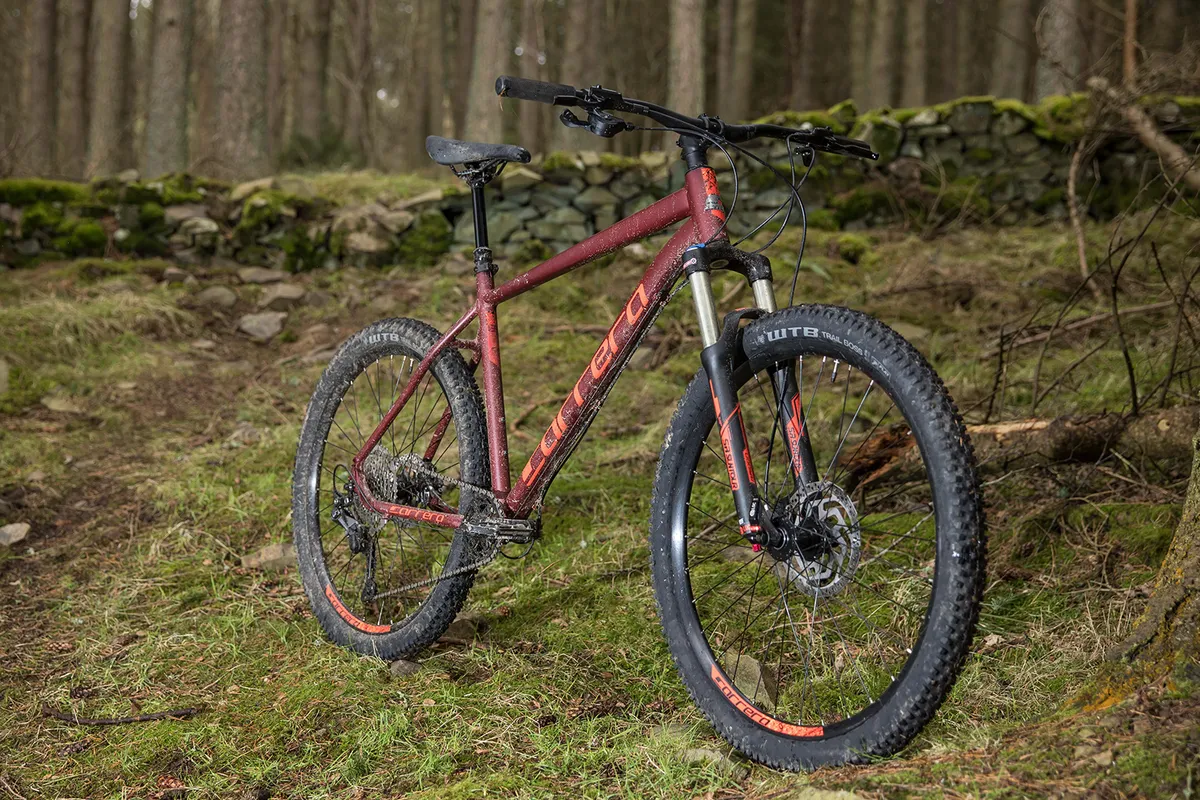
Carrera Fury bottom line
Granted, the Fury isn’t the most beautiful bike, but it represents some of the best value for money and performance at this price point. The presence of a dropper post and its more progressive geometry help it trump its competitors, but a better fork would be the icing on the cake.
How we tested
Bike brands are forever striving to offer the most performance and best value they can. While the pandemic and Brexit are clearly having a negative impact on prices, today’s sub-£1k bikes appear to represent a big leap forwards in terms of both parts and geometry, compared to their three- or four-year-old couterparts.
If these improvements translate to better performance on the trail, it’s great news for buyers on a budget.
We tested our four hardtail mountain bikes on a mix of the trails they’re most likely to be ridden on, ranging from fireroads and bridleways through to more technical trail-centre loops and singletrack, to find out exactly where they excel and where their limits are.
Also on test
- Specialized Rockhopper Comp 29 2X
- Vitus Nucleus 29 VRS
- Cannondale Trail SE 4
Product
| Brand | carrera |
| Price | 600.00 GBP |
| Weight | 13.9300, KILOGRAM (L) - |
Features
| Fork | SR Suntour Raidon air, 120mm (4.7in) travel |
| br_stem | Unbranded, 45mm |
| br_chain | KMC X10 |
| br_frame | Aluminium alloy |
| Tyres | WTB Trail Boss with Carrera Puncture Protect 27.5x2.25in |
| br_brakes | Shimano MT200, 180/160mm rotors |
| br_cranks | Prowheel, 32t |
| br_saddle | Carrera Memory Foa |
| br_wheels | Carrera double-wall alloy |
| br_headset | Semi-integrated |
| br_shifter | Shimano Deore M4100 |
| br_cassette | Shimano HG500, 11-46t |
| br_seatpost | Carrera 125mm dropper |
| br_gripsTape | Unbranded |
| br_handlebar | Carrera, 760mm |
| br_bottomBracket | External |
| br_availableSizes | XS, S, M, L, XL |
| br_rearDerailleur | Shimano Deore M4100 (1x10) |
